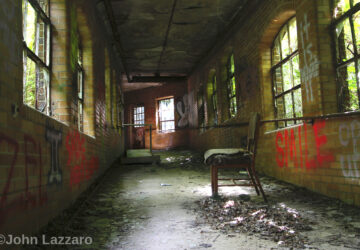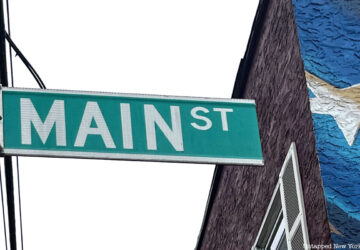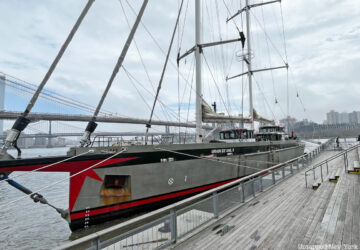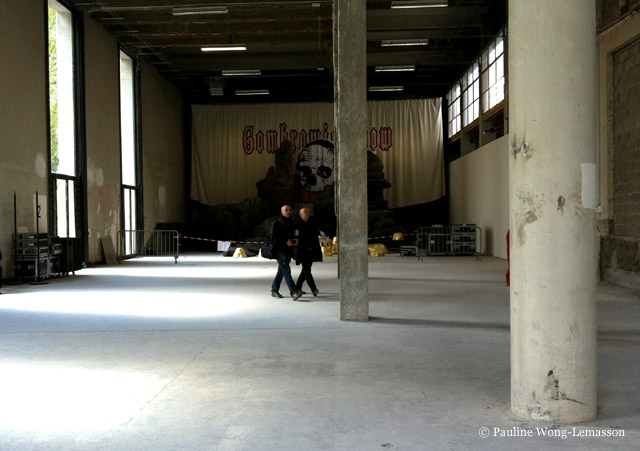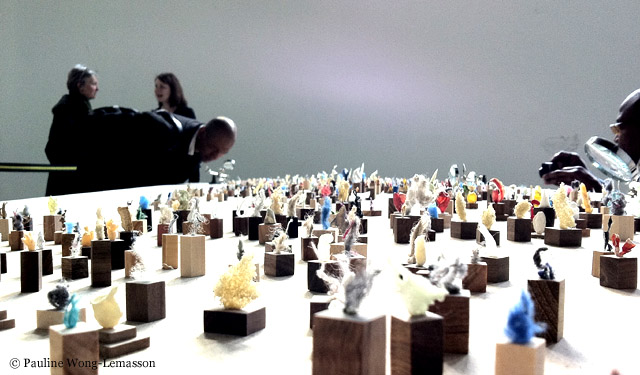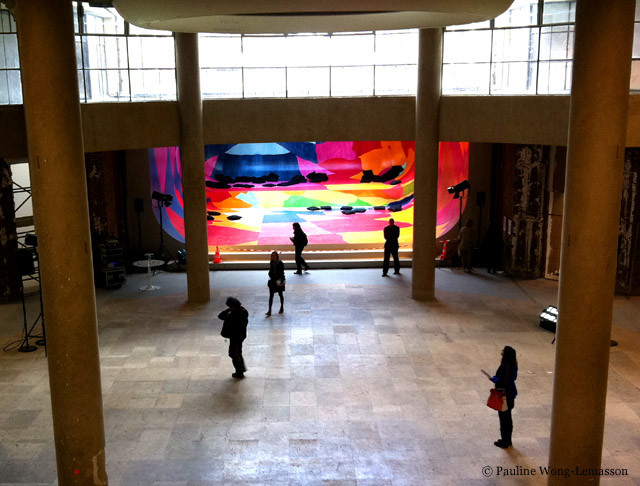 Towards the expansive lower galleries with view of “Death of a King” by German artist Ulla von Bradenburg
Towards the expansive lower galleries with view of “Death of a King” by German artist Ulla von Bradenburg
On April 12-13, 2012, the Palais de Tokyo (re)opened to the public with a 30-hour, around-the-clock event that featured exhibitions, installations, performances and concerts by 50 artists. After ten months of renovation led by architects Anne Lacaton and Jean- Philippe Vassal, the Palais de Tokyo now occupies its entire 22,000 m2 building (approx. 236,800 sq. ft), making it Europe’s largest contemporary art center.
The lines to enter the (re)opening on both nights were intimidating. But nobody, including myself, minded the wait — the extra twenty minutes on the Avenue Président Wilson offered a chance to view the striking “Seven Windows” installation by Swiss-American artist Christian Marclay on the seven windows of Tokyo Eat Restaurant. If this was the prelude to what was inside the Palais, there was every reason to be patient (and excited).
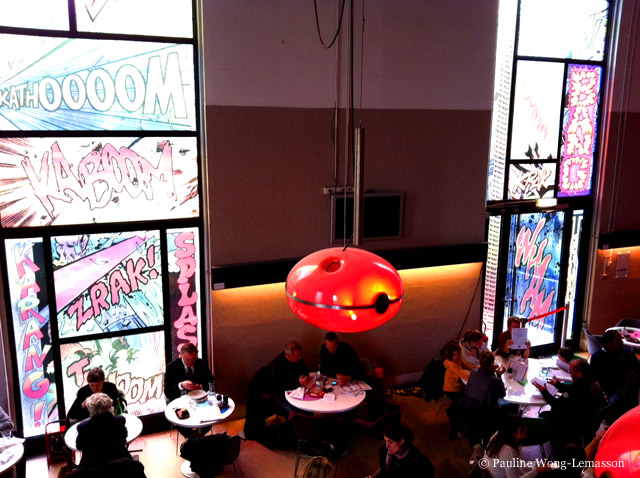 View of Christian Marclay’s “Seven Windows” installation from inside Tokyo Eat Restaurant.
View of Christian Marclay’s “Seven Windows” installation from inside Tokyo Eat Restaurant.
If anyone ever wondered what a ┚ ¬22 million renovation looks like, the Palais de Tokyo makeover will change all perceptions. The massive space resembles a modern, industrial wasteland – raw, exposed, unpainted, dusty and most of all non-directional. It may seem that the center was not quite ready for its big reveal, until of course you quickly figure out that the unfinished look is, as emphasized by the center’s President Jean de Loisy, deadly intentional.
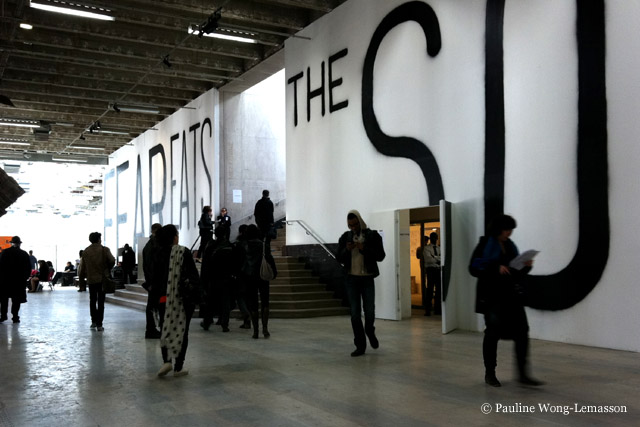 “FEAR EATS THE SOUL” on the walls.
“FEAR EATS THE SOUL” on the walls.
The Palais de Tokyo champions creative artistic expression above all else and will focus particularly on bringing emerging and established French artists to the international art scene. Wherever artists choose to express themselves — on the walls, windows, stairs or ceiling — there will be a place for them within the many diverse gallery spaces at the center.
Indeed, the lack of directional signage invites the visitor to freely explore the expansive four floors of the maze-like building. The visit becomes both an artistic and architectural journey of discovery — from the light-filled upper galleries to the darker, more intimate areas of the lower galleries and cinema rooms.
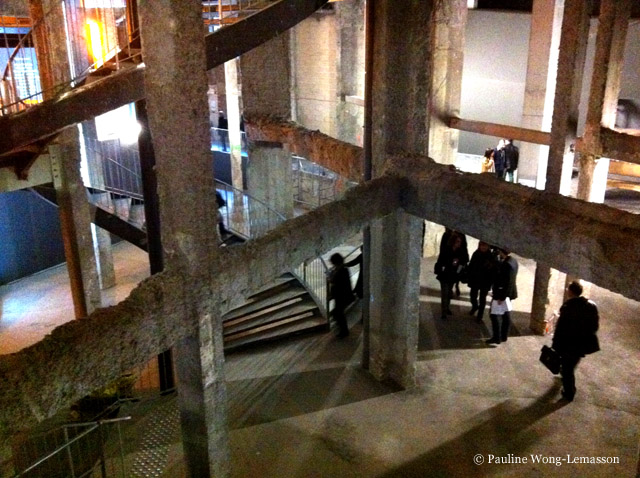 The exposed beams criss-cross the downstairs galleries.
The exposed beams criss-cross the downstairs galleries.
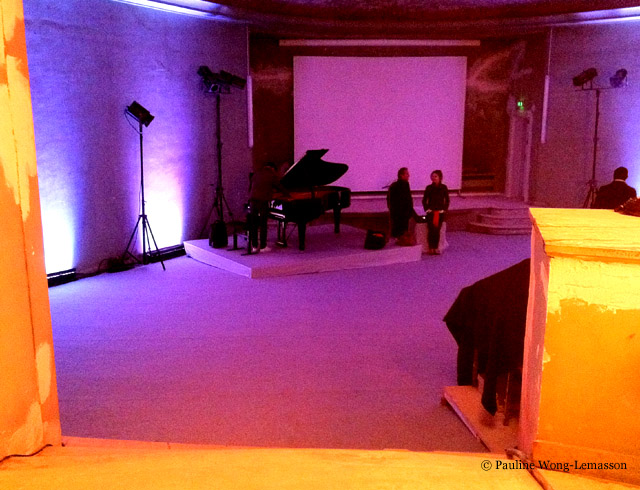 A recently renovated cinema room within the downstairs galleries.
A recently renovated cinema room within the downstairs galleries.
Some of the highlights of the (re)opening installations included the suspended “The Blind Leading the Blind” sculpture by Belgium artist Peter Buggenhout, the skateboard ramp inspired “Death of a King” by German artist Ulla von Bradenburg, and the celestial “La Grotte Stellaire” by French artist Julien Salaud in one of the cinema rooms. As well, a new series of Modules — Fondation Pierre Bergé — Yves Saint Laurent will be inaugurated and is currently featuring five emerging artists — Cécile Beau, Sarah Fauguet & David Cousinard, Zdenek Kosek, Benoît Pype and Maxime Rossi — who are all exhibiting at a major institution for the first time. I particularly enjoyed the miniature installations of Benoît Pype’s “Fabrique du résiduel,” which looked like tiny pieces of colorful poussière (dust) carefully mounted on wooden blocks:
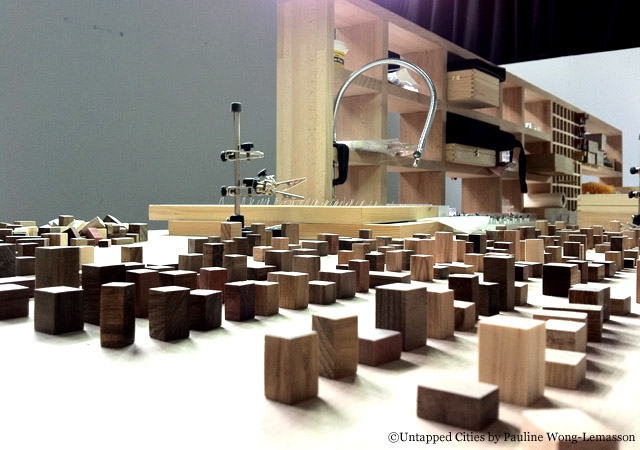 The miniature wooden blocks of Benoît Pype’s “Fabrique du résiduel.”
The miniature wooden blocks of Benoît Pype’s “Fabrique du résiduel.”
My friend Linh Lê commented that Cécile Beau’s “Subfaciem” looked like an air tree growing from the middle, with symmetrical branches and roots on both ends. The Modules will ambitiously aim to showcase 25 emerging artists each year, and the first five artists are spectacular.
After leaving the (re)opening event, I was left to ponder the words “Fear eats our souls” that appeared spray painted in larger-than-life size over several walls in the Palais de Tokyo. Clearly there was very little fear involved in (re)opening a super-sized contemporary art center in all its magnificently unfinished and dusty splendor. And that even within a gargantuan contemporary art center, you can still find your own nook and cranny space to enjoy a moment without being jostled by a crowd of spectators. In this case, size does really matter.
The Palais de Tokyo will officially open to the public on April 20, 2012 with the launch of La Triennale, a contemporary art exhibition entitled “Intense Proximité,” curated by Okwui Enwezor, which will investigate what it means to be active as an artist today within the context of a globalized and diverse French art scene. The exhibition program continues in September 2012 with a season based on the concept of “Détours de l’imaginaire” (Detours of the imaginary), the title of the first thematic exhibition conceived by Palais de Tokyo curator Julien Fronsacq.
Le Palais de Tokyo [map]
13 Avenue Président Wilson
75116 Paris
Metro: Iéna
www.palaisdetokyo.com
Get in touch with the author @PWongLemasson.

